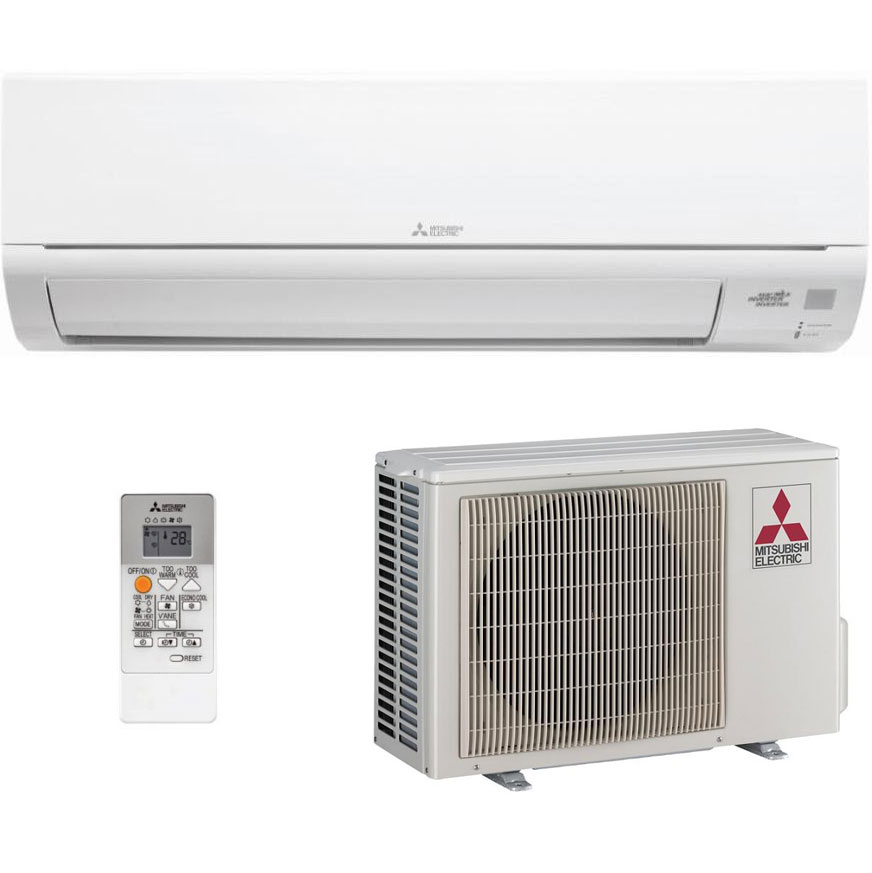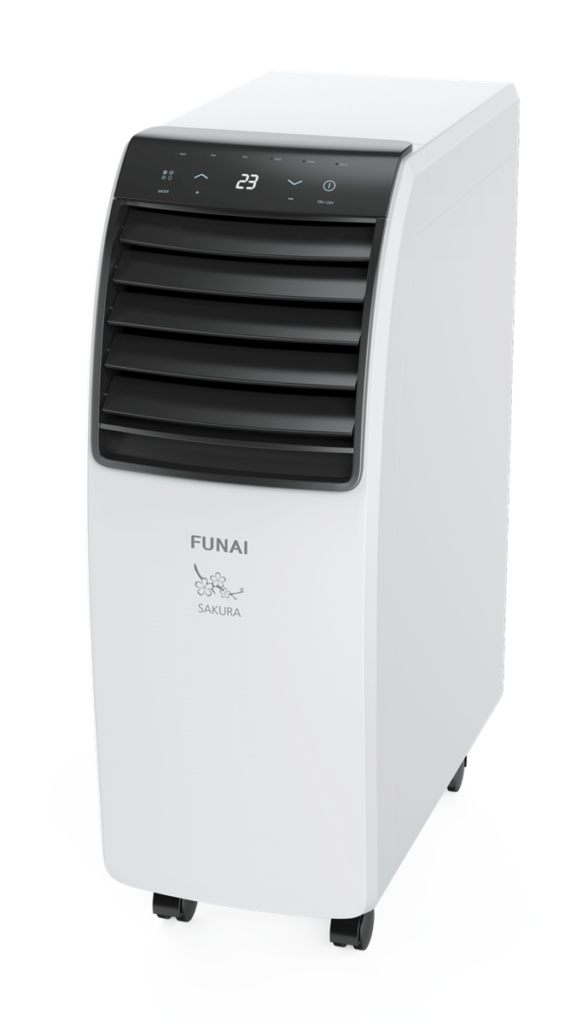Air conditioners are one of the necessary appliances in the home. They allow you to cool the air in summer and warm in winter, providing an optimal temperature in all seasons. But since there are many different models of air conditioners on the market, you need to consider several parameters in order to find a truly high-quality option. We have prepared a brief guide on how to choose and made a rating of the best air conditioners of 2024, including novelties and the most popular models.
Key Takeaways
- Main types are split systems (indoor and outdoor units) and portable ACs (single freestanding unit).
- Split systems better for whole home cooling. Portables good for spot cooling needs or rented spaces.
- Key factors: cooling capacity, energy rating (stars), noise level, features like remote control.
- Top split brands: Mitsubishi Electric, Toshiba, LG. Rated for reliability, efficiency, noise levels.
- Prices range from $600-$2000+. Higher cost balanced by lower electricity bills over time.
- Look for inverter motor for smooth operation. Auto-restart, self-cleaning features add convenience.
- Top portable brands: Funai, FUNAI, Ballu. Under $1000. Easy to move room to room.
- Portables vent hot air out window or wall. Condensation may need manual draining.
- For central whole home cooling, ducted systems typically more effective than wall split systems.
- Regular maintenance improves efficiency – clean filters, drain condensation, check refrigerant levels.
Key Parameters of an Air conditioner
Heat can cause many health problems such as dehydration, water-salt imbalance, hypoxia, risk of blood clots and so on. That is why in the summer months you can’t do without an air conditioner, which improves the microclimate of the house and normalizes the general well-being of the occupants. It creates artificial gusts of wind, cooling air masses, and allows you to change the power of the air flow depending on personal preferences of the person.
The air conditioner freshens the air well and allows you to adjust the temperature of the air streams. It only works at close range, so people often need to position themselves next to it to get the most out of it. There is a wide variety of air conditioners on the market that are available in different forms, and differ in the type of installation and capacity. Therefore, it is difficult to find a device to suit your needs in order to increase your comfort level during periods of extreme heat.
Main categories
Similar to the operation of heat pumps, an air conditioner usually consists of a compressor and a condenser. Its operating principle is simple: it draws in air, cools it, and then disperses it around the room.
There are two main categories of air conditioners: monoblocks and splits.
Monoblock – consists of one unit and operates based on a thermodynamic cycle consisting of four main elements: compressor, condenser, expansion valve and evaporator. It has a moderate capacity and must be located near a window to allow air to escape to the outside through a vent or ductwork. There are also models that vent heat to a water loop.
A split system consists of two units and also has a compressor, condenser, expansion valve and evaporator. It usually includes 2-4 indoor evaporators, but you can also find models with 5-6 evaporators. In air conditioning mode, the indoor unit containing the evaporator traps the heat of the air through the battery and circulates the airflow evenly to cool the room. The outdoor unit contains a compressor, condenser, and regulator.
For air conditioning in a single room, you can use a monoblock unit because it is more economical and has a simple installation. For several rooms, it is better to buy a split system that supports remote control.
Type of an air conditioner
Reverse Cycle air conditionig has both cold and warm mode, and comes in one-piece or split versions. It takes up little space and can be used at any time of year, supplementing the natural cooling system and aiding the operation of heating units.
Portable air conditioner is designed for short-term use because it has a small capacity. It usually sits on casters or stands directly on the floor, but can move freely throughout the rooms.
Stationary wall-mounted – has a small volume and fits perfectly into the interior, as it is made in a concise design. It effectively cools the air and often allows you to regulate the humidity and ionize the air masses.
Cassette – is an air conditioner, the inner unit of which is placed directly on the ceiling. It is very discreet and allows you to condition spaces of 40-150 square meters. It is ideal for stores and offices and is almost always equipped with a reversible ventilation system.
Top 10 best wall mounted split systems:
- Mitsubishi Electric MSZ-HR25VF / MUZ-HR25VF
- AUX ASW-H09B4/FJ-R1
- GREEN GRI/GRO-09HH2
- Roda RS-A09F/RU-A09F
- Toshiba RAS-09U2KHS-EE / RAS-09U2AHS-EE
- LG B09TS
- Gree GWH07AAA-K3NNA2A
- Mitsubishi Electric MSZ-LN25VG / MUZ-LN25VG
- Ballu BSUI-09HN8
- Toshiba RAS-07U2KH3S-EE / RAS-07U2AH3S-EE
Top 10 best mobile portable air conditioners:
- Funai MAC-SK35HPN03
- FUNAI MAC-OR25CON03
- Ballu BPAC-07 CD
- Royal Clima RM-BS22CH-E
- Zanussi ZACM-09 MS/N1
- Timberk T-PAC07-P09E
- Electrolux EACM-13HR/N3
- Ballu BPHS-12H
- Electrolux EACM-09CG/N3
- Zanussi ZACM-12 MS/N1 Black
The best wall-mounted split systems
1. Mitsubishi Electric MSZ-HR25VF / MUZ-HR25VF wall mounted split system

The Mitsubishi Electric MSZ-HR25VF / MUZ-HR25VF is a stationary multi-component air conditioner equipped with the latest technology to heat and cool the air. It is capable of improving the microclimate of your home in minutes, serving a space of no more than 25 square meters, and destroying pathogenic bacteria with its antioxidant filter. This split system is virtually silent and is equipped with many useful features such as self-diagnosis, economical cooling and self-cleaning.
Pros:
Supports remote control.
Equipped with an inverter motor.
Fights the formation of mold.
Improves indoor climate.
Allows setting a timer.
Makes a reliable fixture on the wall.
Cools and heats space.
Cons:
Not detected.
2. Toshiba RAS-09U2KHS-EE / RAS-09U2AHS-EE wall mounted split system

Toshiba RAS-09U2KHS-EE / RAS-09U2AHS-EE is an energy efficient and easy to control air conditioner capable of cooling or heating up to an area of 46 square meters. It is equipped with a programmable timer that allows you to easily turn it on at any time you want, and is also equipped with restart, night mode, and self-diagnostic functions. With this split system, you don’t have to worry about sleeping and staying awake, as it emits noise in the range of 30-45 dB during operation.
Pros:
Has a modern design.
Does not require any special control skills.
When the light goes out, it restarts automatically with the set settings.
Equipped with a removable filter.
Allows you to adjust the direction of airflow.
Cons:
Smells like plastic for a while after unpacking.
3. LG B09TS wall-mounted split system

The LG B09TS air conditioner made it to our top rating thanks to the fact that in addition to its ability to cool, heat and ionize the air, it supports remote control via Wi-Fi. This way, you don’t need to be in close proximity to the unit to change the mode or adjust the direction of airflow. It is designed for an area of no more than 25 square meters and emits a noise level of only 19 dB, making it one of the quietest equipment of its kind.
Pros:
Equipped with an inverter compressor.
Conserves power consumption.
Supports remote control.
Protected against voltage fluctuations.
Cools her space fast.
Self-cleaning and self-diagnostic.
Quiet operation.
Cons:
Slow operation of control via SmartThinq mobile app.
Best portable air conditioner
1. Funai MAC-SK35HPN03 mobile air conditioner white

The Funai MAC-SK35HPN03 is the best 2021 mobile air conditioner that can cool, heat, dehumidify and ventilate air. It operates at 1076-1250 watts with an airflow of 330 m3/h and is designed for spaces no larger than 35 square meters. This unit does not require drilling into walls, as it is floor mounted, and comes with a mounting kit to make it easy to install.
Pros:
Supports remote control.
Equipped with an air cleaning filter.
Automatically performs diagnostics.
Has night mode.
Allows to adjust the direction of airflow.
Equipped with light indication.
Disadvantages:
Not detected.
How to choose the best air conditioner?
Finding the best air conditioner is quite a long process, because it is not enough to be guided only by its price. It is important to know how to choose a device so that it will condition the air efficiently and at the same time consume little electricity.
Air conditioner Power
Power is the first parameter to consider before moving on to buying an air conditioner. A low-powered unit will not be able to properly heat or cool your home, and a powerful appliance will be practically useless for small spaces. In addition, it will consume too much electricity.
To determine the optimal power, you need to make some calculations. That is, multiply 100 watts by the number of square meters of the room with a ceiling height of 2.5 meters. And if you need to cool the room of 20 square meters, the air conditioner should have a capacity of about 2000 watts.
Energy efficiency of an air conditioning
With the onset of heat, the air conditioner becomes the most used electrical appliance in the house. And this can have a negative impact on your energy bills at the end of the month. That’s why you need to consider the energy efficiency of all the models you like.
Most modern devices for maintaining optimal indoor climate conditions are of class A, A+ and A++ energy consumption. The difference between the classes is 10%, so the most energy-consuming equipment is considered to belong to class A. But at the same time it has a longer service life.
Before you look for a place for your new air conditioner, first determine which category is closer to you. Monoblocs are easy to install and can be transported when needed because all of their elements are in one unit. They are also very useful for cooling spaces larger than 35 square meters.
Split systems work the same way as monoblocks, but are made up of several separate elements. There is a unit inside and a ventilation unit outside. Unlike its counterpart, the split is harder to transport and harder to set up. However, it is more efficient at cooling air masses.
Noise level
A lot when using an air conditioner depends on the level of noise it can make. And if you consider the purchase from this point of view, split systems are less noisy than monoblocks, given that their motor is placed outside the house. They make about 30 decibels of noise, whereas monoblocks are capable of making up to 60 decibels.
Features
A good air conditioner is equipped with several useful functions. Nowadays, all models are capable of dehumidifying the air, but only a few allow you to turn this function on regardless of cooling.
Also on the market you can find equipment that is able to remove unpleasant smells. Usually, this refers to air conditioners, which use activated carbon filters. Those that include an electrostatic filter are much more effective against bacteria, pollen and dust.
Air conditioners with a timer are considered very popular. They allow you to choose on and off times to cool your space without a human presence. The remote control also provides increased comfort of use.
Final Results of air conditioning review
Today we have reviewed the 20 best air conditioners of 2021, dividing them into two units: split systems and portable units, and came to the following conclusions:
- Mitsubishi Electric MSZ-HR25VF / MUZ-HR25VF is the most productive and multifunctional air conditioner.
- Toshiba RAS-09U2KHS-EE / RAS-09U2AHS-EE air conditioner is able to treat square meters.
- The air conditioner Funai MAC-SK35HPN03 possesses high mobility and convenience of control.
